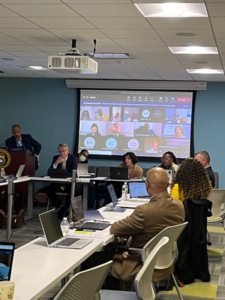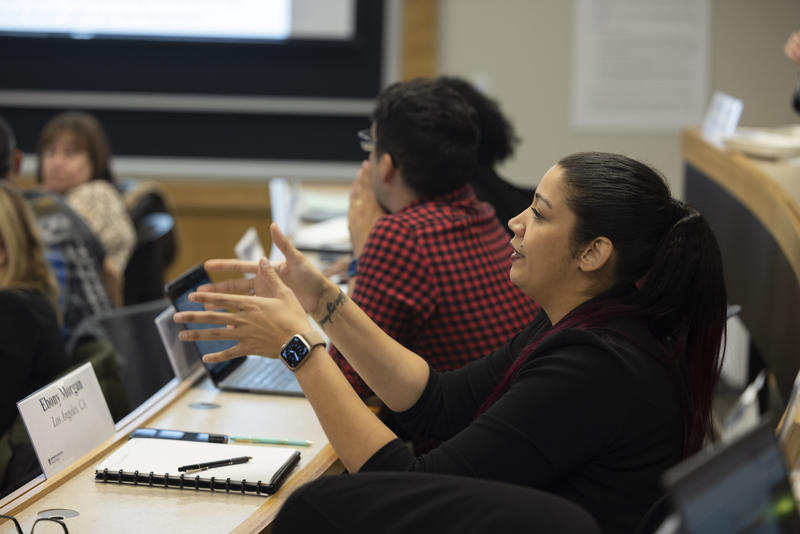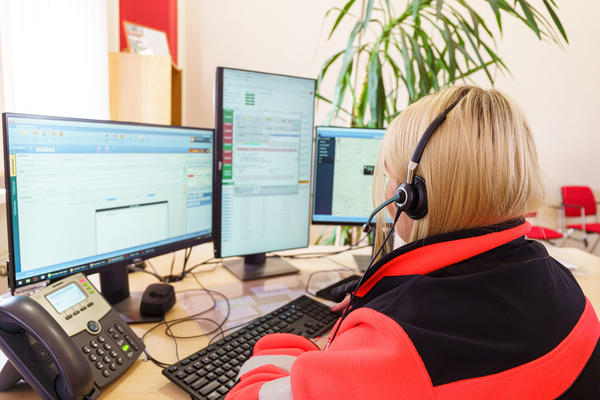
Strengthening Alternative 911 Emergency Response
 In early June, Project Leader for the GPL’s Alternative 911 Emergency Response work Gabriela Solis spoke on a panel hosted by the Pennsylvania State Law Enforcement Citizen Advisory Commission. Before an audience of Pennsylvania commission members and local criminal justice stakeholders, Gabriela discussed lessons learned from her experience working with a Community of Practice of 50+ governments engaged in alternative response and the GPL’s highly selective cohort of five governments actively implementing unarmed, alternative response teams. The panel included practitioners, researchers, and government and law enforcement leaders, who discussed learnings from alternative and co-responder models.
In early June, Project Leader for the GPL’s Alternative 911 Emergency Response work Gabriela Solis spoke on a panel hosted by the Pennsylvania State Law Enforcement Citizen Advisory Commission. Before an audience of Pennsylvania commission members and local criminal justice stakeholders, Gabriela discussed lessons learned from her experience working with a Community of Practice of 50+ governments engaged in alternative response and the GPL’s highly selective cohort of five governments actively implementing unarmed, alternative response teams. The panel included practitioners, researchers, and government and law enforcement leaders, who discussed learnings from alternative and co-responder models.
Key insights from this discussion included:
Implementing alternative responder teams requires strong cross-departmental collaboration: Across all five governments participating in the GPL’s cohort, complex cross-departmental collaboration and trust building have been key components of their ability to make progress on planning and launching alternative emergency response teams. In Phoenix, AZ, calls will be screened for safety initially by the Phoenix police department and then handed to the Phoenix Fire Department for the direct dispatch of their new Behavioral Health Units (BHU). To execute a successful implementation, the local fire and police departments meet frequently to align and communicate about call triage protocol, 911 system technology, call center staff training updates, and data sharing practices that will facilitate a smooth handoff for 911 calls between parties. The GPL has seen continued success when jurisdictions bring law enforcement, 911 dispatch, and other relevant stakeholders together early in the planning process to learn and share expertise about how to best identify and triage the types of 911 calls potentially eligible for unarmed response.
Jurisdictions can invest early in identifying call system changes needed to dispatch unarmed teams safely: Across the country, 911 emergency communications centers range in size, process, and access to updated technology. To successfully triage and dispatch alternative responder teams, jurisdictions should assess the extent of the changes that need to be made to their systems and build in an additional 6-12 months to their implementation plan to support these developments long term. In the GPL implementation cohort, governments have made important investments in updated data collection processes, call triage process re-design, and staff training to support alternative response team implementation.
Additional investments are needed to hire and retain this new type of emergency response workforce: Jurisdictions must think creatively about recruiting, hiring, and retaining staff with the skillset required to be successful on an alternative response team. With high demand for mental health and crisis care professionals, governments are looking for new pipelines to staff their teams. Philadelphia, PA has shown success getting ahead of this challenge by investing in early training for contracted service providers through a learning collaborative. Other jurisdictions are exploring collaborations with local community college certification programs and professional schools to recruit potential candidates.
Learn more about the GPL’s Alternative 911 Emergency Response work.
Strengthening Alternative 911 Emergency Response
Strengthening Alternative 911 Emergency Response
Strengthening Alternative 911 Emergency Response
Strengthening Alternative 911 Emergency Response
Strengthening Alternative 911 Emergency Response
Strengthening Alternative 911 Emergency Response


